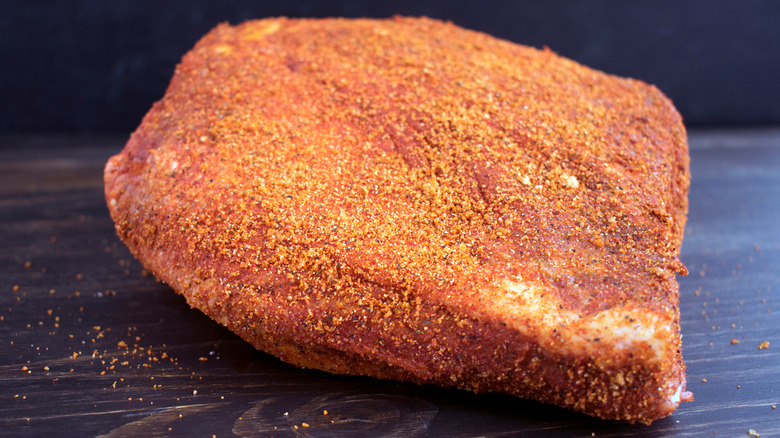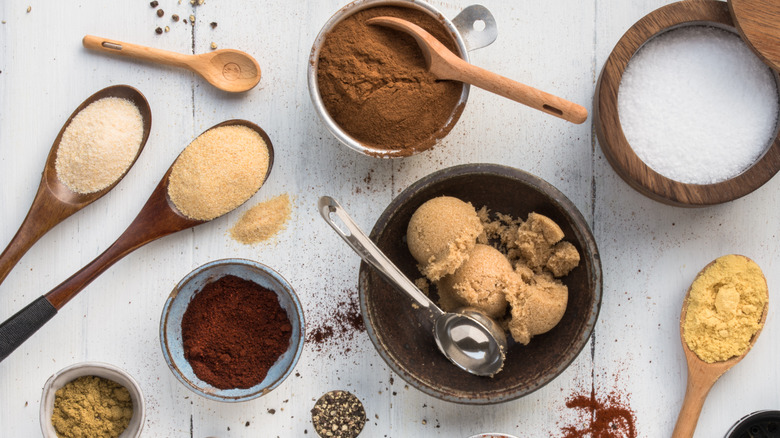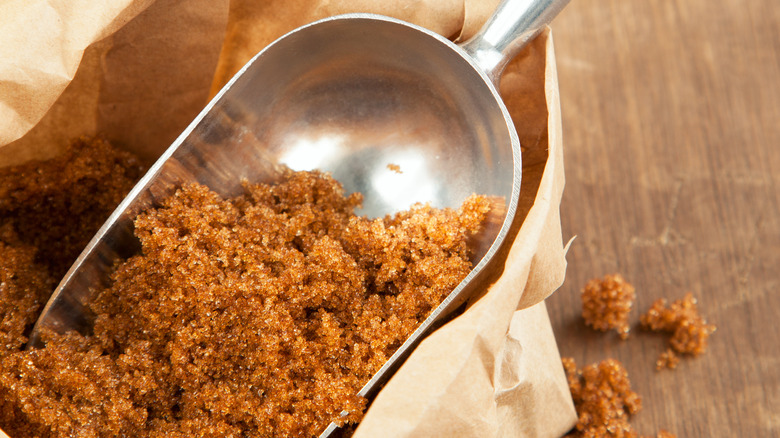Why Using Old Brown Sugar In Rubs Will Ruin Your Grilled Meats
That old container of brown sugar on the back pantry shelf is a little hard, but it still seems good enough to use, right? Well, maybe not: it depends on what you have in mind. If your plans include some grill time and mixing up a dry barbecue rub, you might want to consider some advice from veteran pitmaster Elizabeth Karmel. According to the cookbook author and founder of Girls at the Grill — her effort to bring women into the traditionally male domain of grilling — any brown sugar added to a barbecue rub should be fresh and moist so it blends in easily with the other ingredients.
"If the sugar is old, it will not mix well and will have the texture of hard pebbles, which will ruin the rub," Karmel told Better Homes & Gardens. Using fresh brown sugar ensures a smooth consistency to the blend, allowing us to apply the rub to the meat gently without damaging the meat fibers or over-seasoning the food.
The role brown sugar plays in a dry barbecue rub
Making your own dry barbecue rub is an easy way to customize the taste and avoid any preservatives that may be present in commercial blends. The ingredients you choose can be a complex mix of sweet, savory, and hot or as simple as a three-ingredient mix of garlic salt, brown sugar, and hot smoked paprika. The role of the brown sugar is to balance out the salt and heat; ideally, you want your dry rub to be composed of about one-third of each. Experimentation is everything, as the options are numerous: think cayenne pepper, onion powder, cumin, chili powder, kosher salt, ground mustard, crushed fennel seeds, dried oregano, or coriander.
Some pitmasters question using brown sugar or any sweetener in a rub, claiming that sugar will burn too quickly on a hot grill. But traditional barbecue is done low-and-slow, below the temperature at which sugar burns. Including brown sugar in the rub will sweeten the flavor and caramelize the meat's outside, creating that tasty crust barbecue enthusiasts love.
How to resurrect hardened brown sugar
The best way to ensure fresh brown sugar is to make that grocery store run, of course. But what if you want to soften up that rock-hard clump in your pantry? It can be done, but it does take time. One method involves draping a wet dish towel over the brown sugar and leaving it overnight, which allows moisture to be drawn back into the sugar, softening it up. The sugar crystals will attract moisture, so with a bit of patience, the method will work. Another way to keep brown sugar soft is to put a few pieces of fresh bread into the sealed container with the sugar so the moisture from the slices is drawn into the pile.
If you're in a hurry, you can always try heating the sugar in an oven at 250-300 degrees Fahrenheit or briefly in a microwave until softened. It helps to understand that brown sugar is actually white sugar to which molasses has been added, that stickiness coating each sugar crystal and binding them together. Heating the sugar doesn't put moisture back into it but will instead melt the molasses, binding the sugar and making it temporarily pliable.


